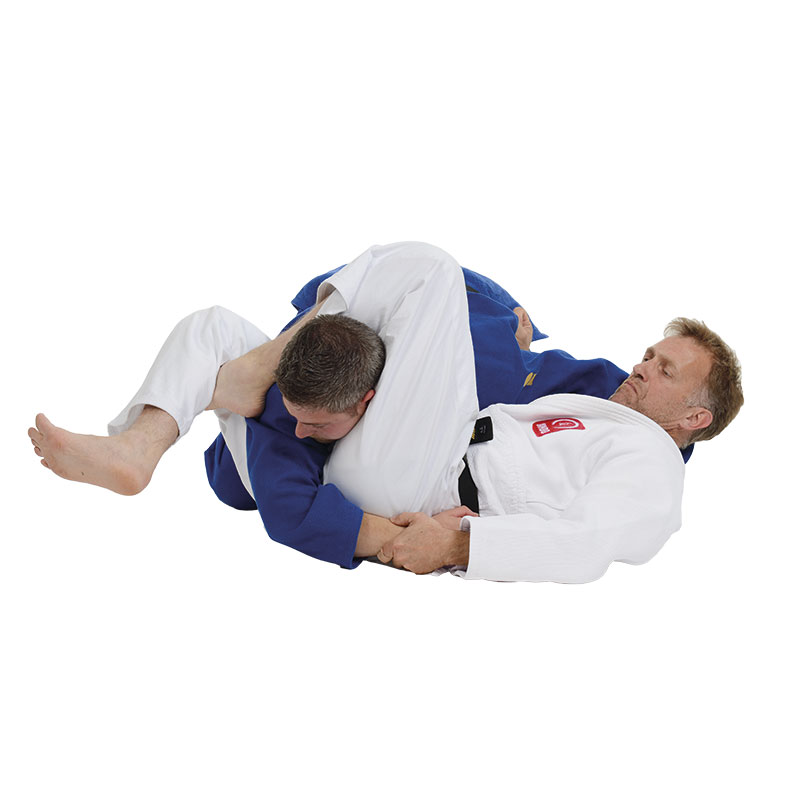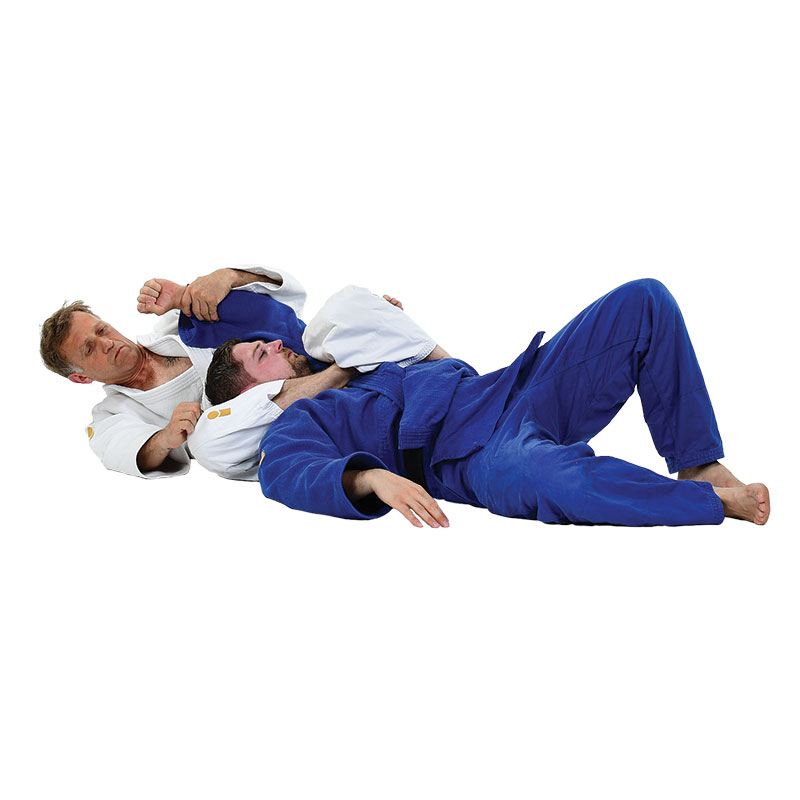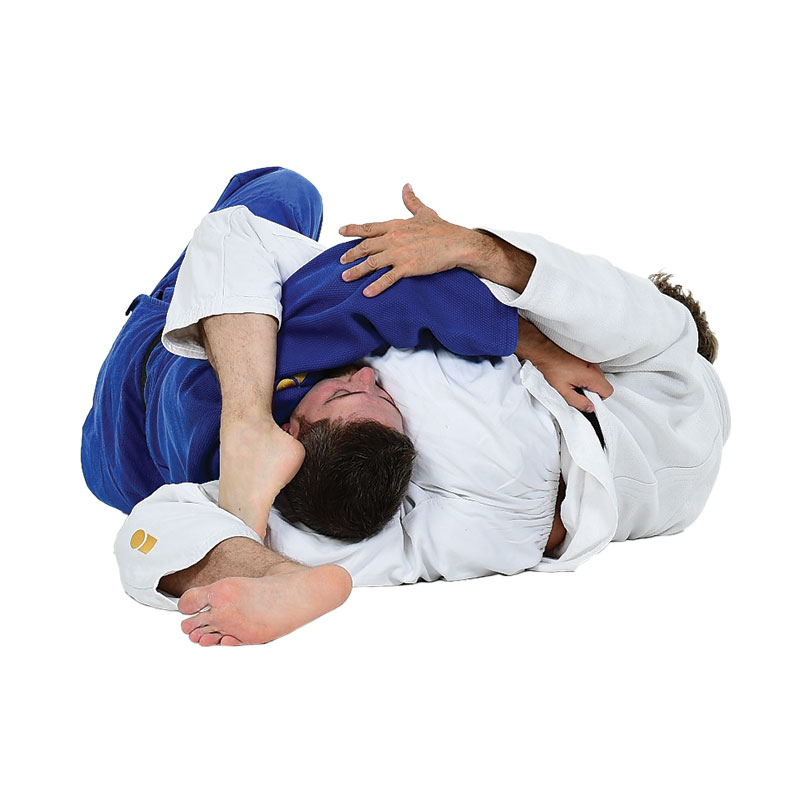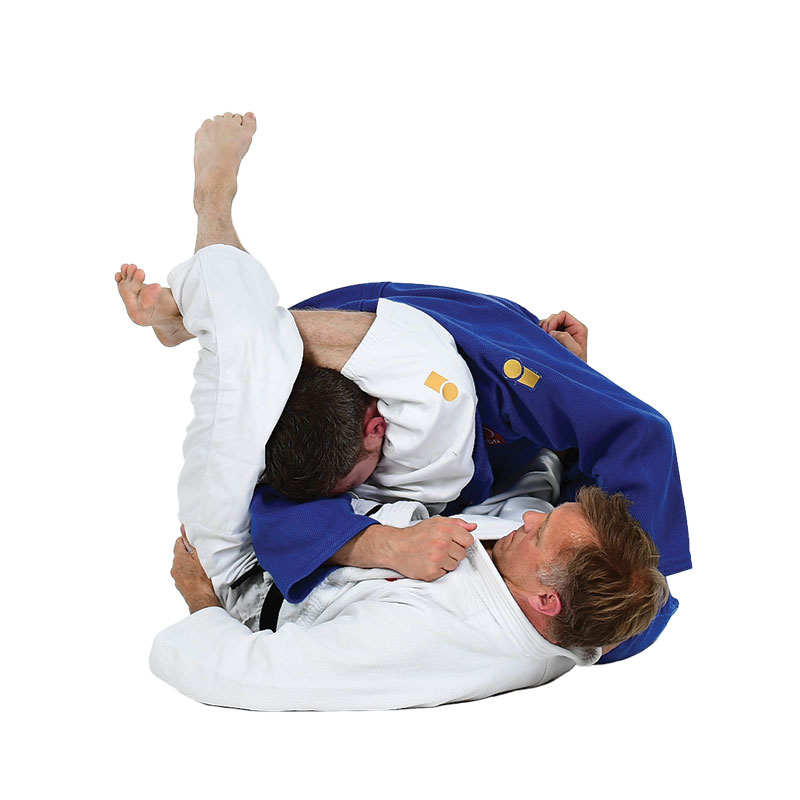Sankaku-jime 三角絞 (Triangle Choke)
Classification: Katame-waza → Shime-waza (Strangulation Techniques)
Sankaku-jime is one of the most iconic submission techniques in judo and other grappling arts. It is a blood choke that uses the legs in a triangular formation to apply pressure to both sides of the opponent’s neck, compressing the carotid arteries. This leads to a rapid and effective submission if applied correctly.
How to Apply
-
Tori lies on their back (aomuke) with uke positioned inside their guard or passing guard.
-
Tori wraps their right leg over uke’s left shoulder, so uke’s head and left arm are inside the leg triangle.
-
The left leg threads underneath uke’s right armpit or across uke’s upper back, and the left knee folds over the right ankle, creating a tight triangle around uke’s neck.
-
Tori grabs their left shin or ankle with their left hand (optional for tightening) and pulls down on uke’s head or extends the hips upward to apply pressure.
-
The choke is applied by squeezing the knees together, pulling the heel tight behind the knee, and bridging the hips if needed.
Biomechanics of Sankaku-jime
-
F1: The right thigh applies pressure on the left side of uke’s neck.
-
F2: The left calf/hamstring presses uke’s own shoulder/arm into the right side of their neck.
-
C (Compression point): The carotid arteries are simultaneously compressed on both sides, cutting off blood flow to the brain.
-
This results in a vascular choke, not an air choke — unconsciousness may occur in seconds.
Key Details
-
Correct angle is crucial: rotate slightly to the side to have uke looking toward their trapped shoulder.
-
Foot placement: Never cross your feet — always lock ankle behind knee.
-
Keep uke’s trapped arm across their own neck (do not allow them to frame or posture up).
-
Hip elevation adds significant power to the strangle.
Applications
-
Often used from guard, mount, transition, or counter-attacks.
-
Can be combined with juji-gatame or omoplata as part of chaining submissions.
-
Also popular in Brazilian Jiu-Jitsu and MMA, making it a versatile and universal technique.



